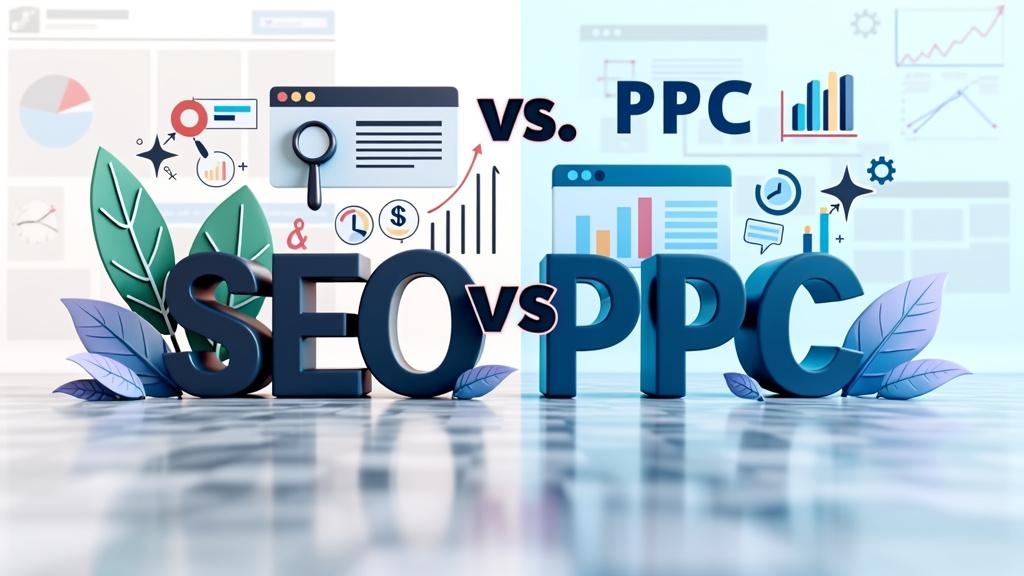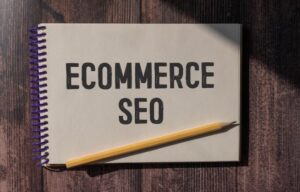SEO vs. PPC: Which Digital Marketing Strategy Fits? With countless businesses vying for online attention in 2025, making informed decisions about digital visibility is paramount. Should your primary focus be on securing coveted top spots in organic search results, a perpetual endeavor yielding enduring rewards?
Or is a more immediate, transactional approach via paid advertising the requisite maneuver to capture fleeting consumer intent? Many business leaders find themselves contemplating this pivotal juxtaposition: investing in SEO (Search Engine Optimization) versus allocating budgets towards PPC (Pay-Per-Click) campaigns.
Deciphering the efficacious pathway necessitates a thorough understanding of each strategy’s mechanics, its inherent strengths and weaknesses, and most significantly, how it aligns with your specific business goals, operational capacity, and desired timeline for growth.
This isn’t merely an academic exercise; it’s a crucial determinant of your business’s trajectory in the competitive online marketplace.
What Exactly Is SEO?
SEO centers around optimizing your website and online content to rank higher in search engine results pages (SERPs) like Google, Bing, and DuckDuckGo for relevant queries.
The traffic gained through these rankings is considered organic search traffic because you don’t directly pay for the click itself. Think of it as building equity in your online presence, earning authority and relevance over time.
SEO agency in miami offers quality service which includes on-page and off-page seo services for improving your website SEO performance in google.
The Organic Imperative
Securing top organic search rankings builds trust and credibility with users. People tend to view organic results as more authoritative and reliable than advertisements. Furthermore, once established, organic traffic is remarkably cost-effective over the long term. While it demands consistent investment in effort, content creation, and technical refinement, you aren’t burdened by a per-click fee. It is, however, a marathon, not a sprint. Results accrue incrementally and compound over months, sometimes even years.
- Technical Foundation: Ensuring your website is crawlable and indexable by search engines, with strong site architecture, fast loading times, and mobile-friendliness.
- Relevant Content: Crafting high-quality, informative, and engaging content that directly addresses user queries and demonstrates topical authority.
- Keyword Strategy: Identifying and strategically integrating relevant keywords that your target audience uses to search for products, services, or information.
- Backlink Acquisition: Earning links from reputable and authoritative external websites, signaling to search engines that your content is valuable and trustworthy.
- How SEO Generally Works:
| SEO Pros | SEO Cons |
|---|---|
| Sustainable long-term traffic | Results are not immediate |
| Builds significant credibility & trust | Constant algorithmic changes require adaptation |
| Higher ROI over time due to no per-click cost | Requires ongoing effort and technical understanding |
| Broader audience reach based on query intent | Rankings are never guaranteed; competitive landscape varies |
| Enhances overall website health and UX | Difficult to directly control specific placement quickly |
Understanding Pay-Per-Click
PPC, a cornerstone of online advertising, involves paying a fee each time one of your ads is clicked. The most prevalent form is Search Engine Marketing (SEM), specifically advertising on search engine results pages (SERPs) like Google Ads. These are the sponsored results you see typically at the top and bottom of a search results page.
The Paid Priority
The primary allure of PPC is speed. You can appear at the top of SERPs almost instantaneously for targeted keywords, driving traffic very quickly. This makes it invaluable for promoting new products, services, sales, or for businesses that need immediate visibility. PPC offers granular control over budgets, targeting, and messaging, allowing for precise reach and clear attribution of results.
- Keyword Selection: Choosing specific keywords users might search when looking for your offering.
- Ad Creation: Writing compelling ad copy that encourages clicks and includes a clear call to action.
- Landing Page Design: Directing ad clicks to relevant, optimized pages on your website designed to convert visitors.
- Bidding: Setting bids for chosen keywords, often through auctions, to determine ad placement. Higher bids (combined with Quality Score) typically result in better positioning.
- How PPC Generally Works (Search Ads):
| PPC Pros | PPC Cons |
|---|---|
| Provides immediate visibility & traffic | Costs money for every click |
| Granular control over targeting and budget | Traffic stops when budget runs out |
| Results are highly measurable and trackable | Lower long-term ROI compared to sustained SEO traffic |
| Excellent for testing keywords, offers, & landing pages | Ads may be perceived with less trust than organic results |
| Quickly adapt to market changes & seasonality | Requires constant monitoring and optimization to avoid waste |
Comparing the Two Strategies: A Deep Dive
While seemingly diametrically opposed, SEO and PPC occupy different spaces in the digital marketing strategy. Discerning which path is requisite—or perhaps a combination thereof—involves analyzing several core aspects.
Cost Considerations
The cost structures are fundamentally different. SEO is an investment in effort, content creation, tools, and potentially agency fees. These costs are often perceived as operational expenses over time. The ROI builds as rankings rise and traffic increases without a direct per-click cost. PPC, conversely, involves a direct, per-click transaction cost. While you control your overall budget, securing top placements for competitive terms can be expensive. The cost is immediate and ongoing as long as ads run. For start-ups with limited cash flow but time/skills, SEO might be preferable. For those with marketing budgets and a need for quick wins, PPC holds sway.
Time to Results
This is perhaps the most glaring difference. You can set up and launch a PPC campaign and see targeted traffic arriving within hours. It offers near-instantaneous gratification and is invaluable for capitalizing on fleeting opportunities. SEO, however, operates on a much longer time horizon. Initial ranking improvements might be visible in weeks, but significant, traffic-driving gains often require months of consistent effort. Think 6-12 months or more for highly competitive niches.
Sustainability and Long-Term Value
An effective SEO strategy yields results that are inherently more sustainable. While algorithms shift, well-optimized content and a strong technical foundation tend to maintain visibility, providing a perpetual stream of traffic. PPC results cease the moment the budget is exhausted or the campaign is paused. While valuable for immediate lead generation or sales spikes, it doesn’t build the same kind of long-term asset that robust organic search rankings afford.
| Comparison Factor | SEO (Organic) | PPC (Paid) |
|---|---|---|
| Speed to Results | Slow (Months) | Fast (Hours/Days) |
| Cost Model | Investment (Effort, Tools) | Transactional (Per Click) |
| Sustainability | High (Enduring Asset) | Low (Transient) |
| Control | Less Direct | High (Targeting, Budget, Ads) |
| Trust Perception | Higher Generally | Lower Generally |
| Scalability Speed | Gradual | Rapid (with budget) |
Recommendations
Deciphering the optimal digital marketing strategy for your business requires a careful evaluation of your specific context. Recognize that SEO serves as a foundational long-term program, steadily building authority and reducing acquisition costs over time, while PPC offers an immediate means to capture demand and drive rapid conversions. In many scenarios, the most efficacious approach isn’t an exclusive reliance on one, but rather a thoughtful integration of both, leveraging their respective strengths to form a cohesive digital presence. Prioritize defining clear business objectives, honestly determining your resource capacity, and piloting campaigns to gather data. Do not underestimate the integral nature of ongoing analysis and adaptation in a market characterized by constant flux. To ensure your business makes the most informed choice and crafts a truly efficacious visibility program, consider seeking expert guidance.
Visit our Home Page or Business Blog Page.





